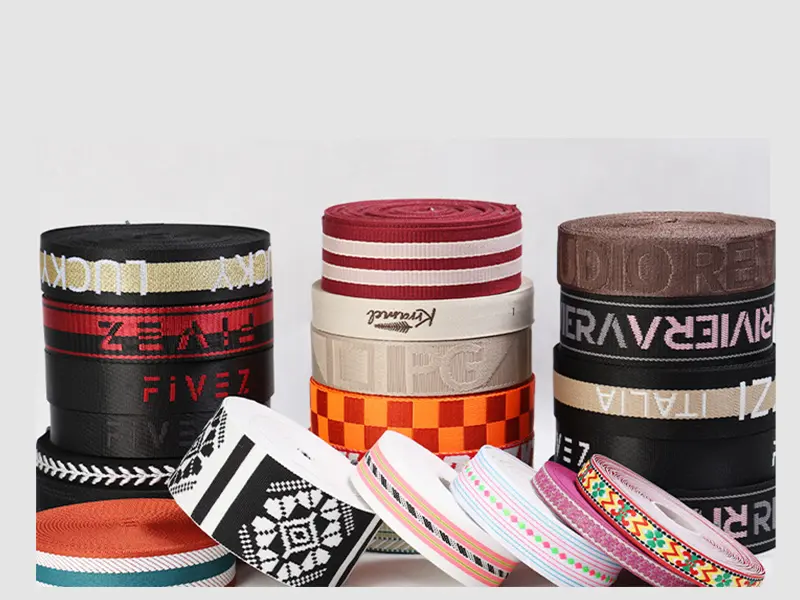If you're a product designer or purchasing manager, you've undoubtedly encountered the term "MOQ" or Minimum Order Quantity. For many, it can feel like a barrier, especially when you need a smaller, specialized batch of webbing for a new product line or prototype. Why can't you just order 200 meters of that custom-colored strap?
The reality is that MOQs aren't arbitrary rules designed to force larger sales. They are a fundamental aspect of efficient, high-quality manufacturing. This guide will pull back the curtain on the webbing production process to explain exactly why MOQs exist and how we can work together to find a solution that fits your needs.
The Core Reasons Behind Webbing MOQs
A professional factory's MOQ is determined by the practical and economic realities of the production line. For custom webbing, three key stages are the primary drivers:
1. Raw Material Procurement
Our process starts with yarn—polyester, nylon, polypropylene, etc. We don't make the yarn ourselves; we source it from specialized suppliers. These suppliers have their own MOQs. To create a custom-colored yarn, they must dye a large batch of raw material, often 300-500 kilograms at a minimum. It is simply not feasible for them to dye a small 20kg batch for a 500-meter webbing order. Therefore, the MOQ for a truly custom yarn color is dictated by the yarn supplier's minimums.
2. The Economics of Dyeing
Even if we are dyeing "greige" (undyed) webbing that we have in stock, the process is highly resource-intensive. Webbing is dyed in large, industrial vats. Dyeing a small batch (e.g., 100 kg) requires almost the same amount of water, energy, and labor for setup and cleanup as dyeing a full batch (e.g., 500 kg). Performing a small run makes the cost per meter prohibitively expensive and environmentally wasteful. This commitment to a full dye lot also ensures perfect color consistency throughout the entire batch.
3. Machine Setup and Calibration
A weaving loom is a complex piece of machinery. Setting it up for a specific order is the most labor-intensive part of the job. A skilled technician must manually thread hundreds, sometimes thousands, of individual warp yarns through the loom according to the specified pattern, width, and thickness. This setup can take several hours.
Once the machine is running, it can weave thousands of meters efficiently. However, if we only run it for a few hundred meters, the immense setup cost is spread over a very small quantity, making the final product uneconomical. Efficiency and cost-effectiveness are achieved through long, continuous production runs.
Flexible Solutions: How We Can Work Around a High MOQ
Understanding the reasons for MOQ is one thing, but you still need a solution. As your manufacturing partner, our goal is to help you succeed. Here are some flexible options we can explore:
- Choose from Standard Colors: We maintain a stock of yarn in dozens of standard, popular colors (black, white, red, blue, etc.). By choosing one of these, you can bypass the custom yarn MOQ entirely, and we can produce a much smaller quantity for you.
- Use Our In-Stock "Greige" Webbing: We often have undyed webbing in various standard widths and materials ready to go. Dyeing this stock material has a lower MOQ than ordering custom-colored yarn, providing a good middle-ground solution.
- Plan and Consolidate: If possible, planning your production needs for 6-12 months and consolidating them into a single, larger order can help you easily meet the MOQ and often results in a better price per meter.
- Let's Talk: The most important step is to communicate your needs. Sometimes a tiny adjustment—like changing the width from 26mm to a standard 25mm—can make a world of difference. Our experts can review your specifications and find creative ways to meet your goals.
The Hidden Risk of "No MOQ" Promises
Be wary of suppliers who promise "no MOQ" on fully custom orders without explanation. Often, this is a red flag. It could mean they are using leftover materials from other jobs, which can lead to inconsistent quality, poor color matching, and failed performance specifications. A reasonable MOQ is often a sign of a professional manufacturer who controls their process from start to finish to guarantee quality.
MOQ isn't a barrier; it's a sign of a professional, quality-controlled manufacturing process. Understanding it is the first step to smart sourcing. Let's work together to find the most efficient and effective solution for your project. Contact our experts today to discuss your requirements.

